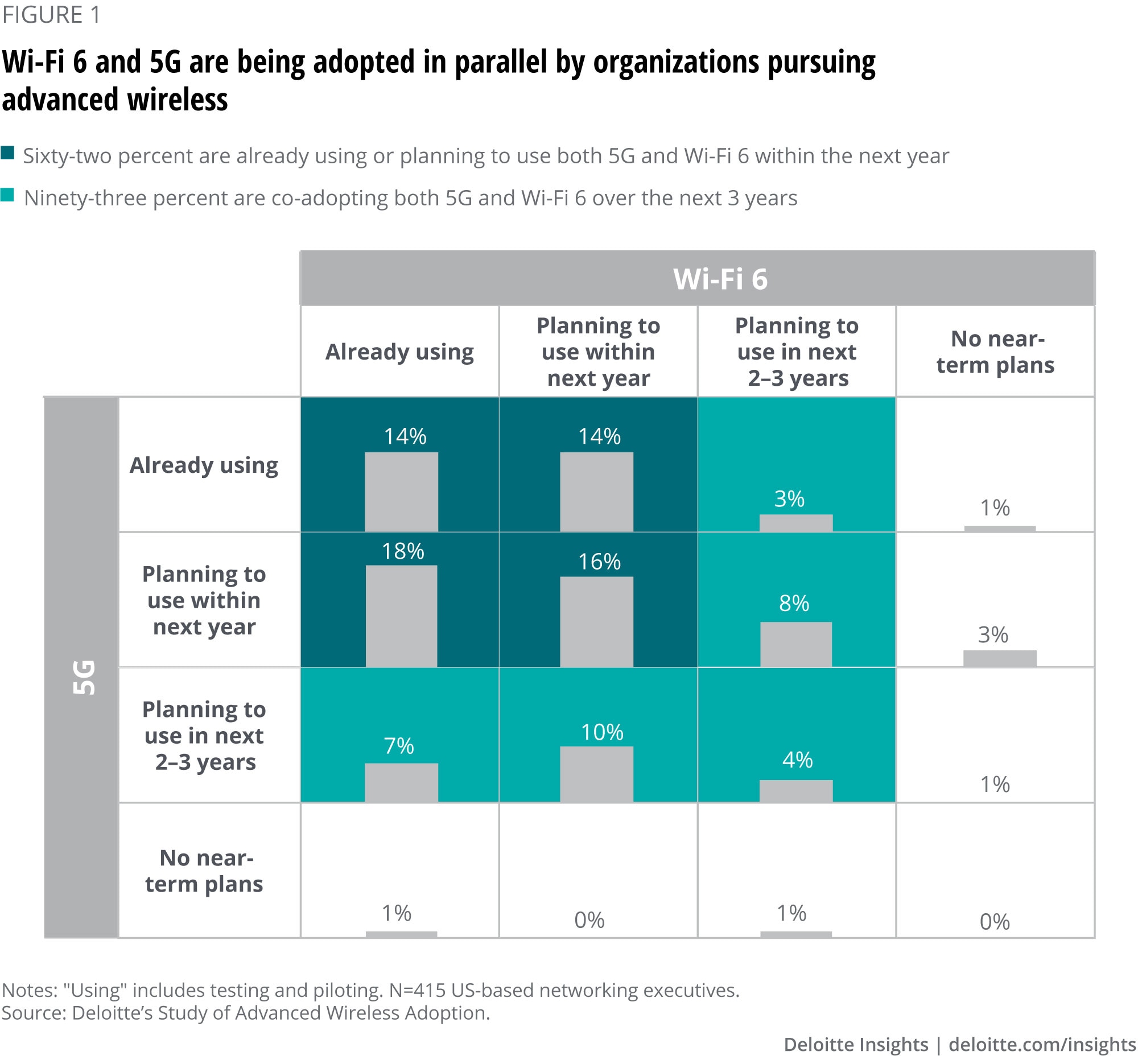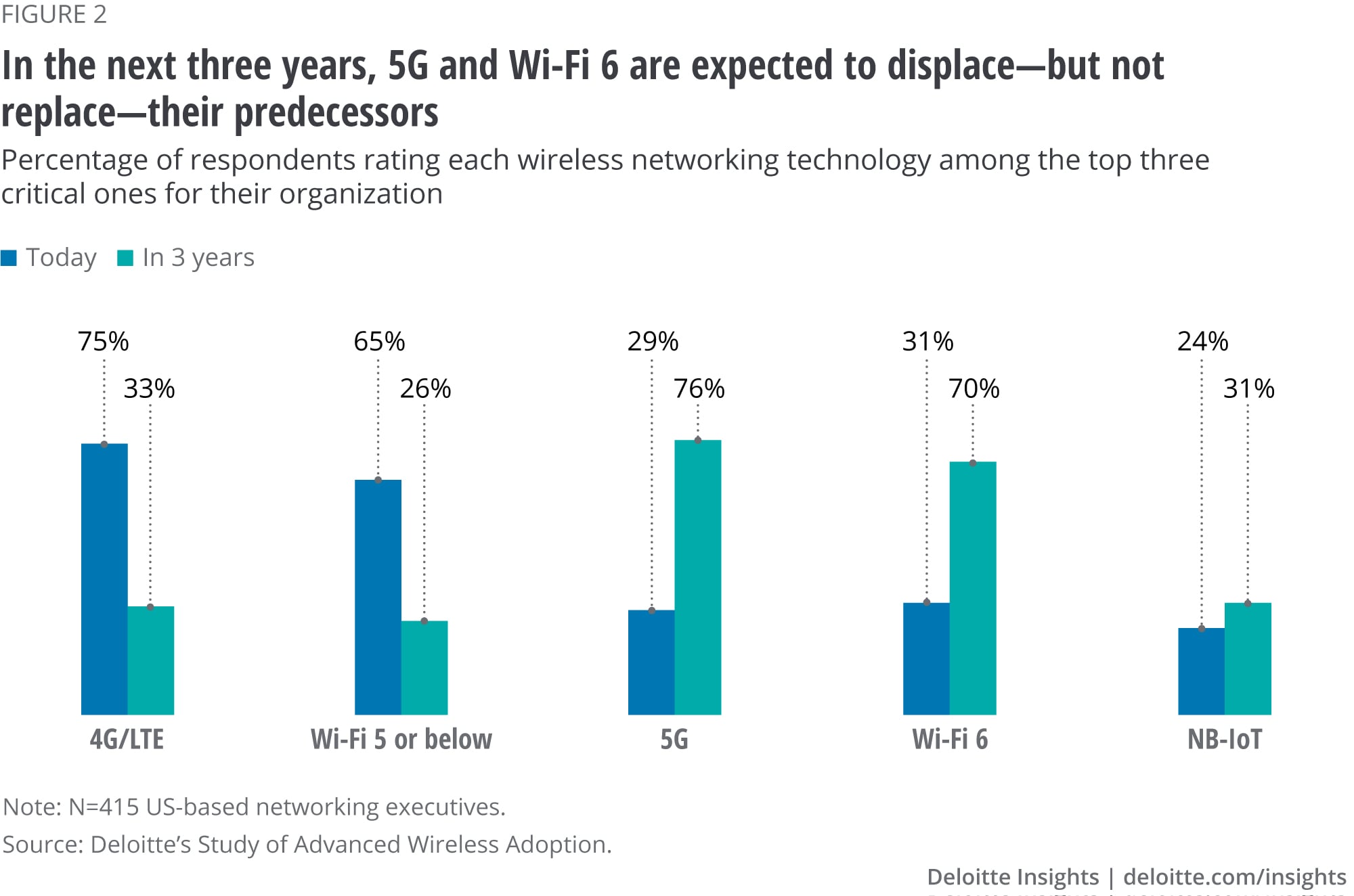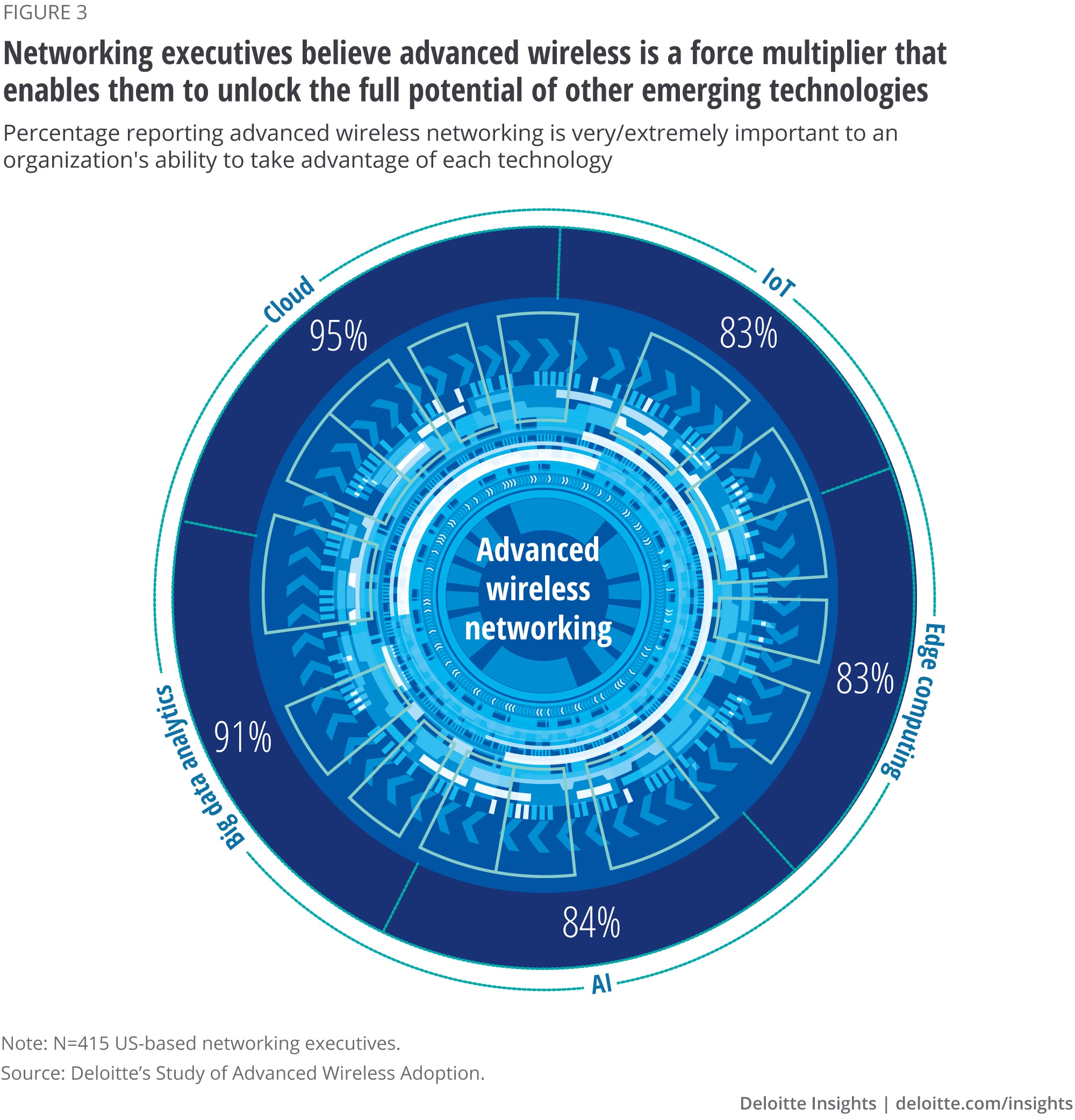
Unbundling the cloud with the intelligent edge How edge computing, AI, and advanced connectivity are enabling enterprises to become more responsive to a fast-moving world
15 minute read
08 September 2020
 Chris Arkenberg United States
Chris Arkenberg United States Naima Hoque Essing United States
Naima Hoque Essing United States Sanket S. Nesargi United States
Sanket S. Nesargi United States Jeff Loucks United States
Jeff Loucks United States
The intelligent edge, drawing on multiple Industry 4.0 technologies, can help a company quickly act on data close to where it is captured—and can enable greater efficiencies and valuable new use cases.
Introduction
The promise of the Fourth Industrial Revolution offers a compelling vision of connected manufacturing systems that can sense, analyze, and respond to physical conditions. Animated by advancing digital technologies, similar visions have conjured the future of intelligent buildings, hospital systems, farms, and cities.
Learn more
Explore the Technology collection
Read about The edge of cloud
Listen to the Intelligent edge podcast
Learn about Deloitte's services
Go straight to smart. Get the Deloitte Insights app
All of the pieces needed to realize these visions appear to be falling into place. Computation is cheap, powerful, and small. Sensors are ubiquitous. Networks are becoming faster and more specialized. Artificial intelligence (AI) has moved beyond hype into broad application, powered by specialized semiconductors.
As these components mature and converge, another big shift in technology is underway. The intelligent edge combines computing power, AI technology, data analytics, and advanced connectivity to quickly act on data much closer to where it is captured. Cloud capabilities—led by hyperscale cloud companies, IT companies, and telecoms—are expanding from data centers out to the edge of networks where more use cases benefit from rapid and intelligent responses to incoming data.
And the edge is becoming central, as businesses across all industries face ever-greater amounts of data, more complex operations, and more dynamic markets. Whether from customers, products, or embedded sensors, real-time data places more demands on businesses to be sensing and responsive. The ability to leverage data quickly and effectively can drive operational efficiencies and competitive advantages. Hyperscalers, IT companies, and connectivity providers are moving to meet business needs with edge computing and intelligence.
Timeliness, connectivity, security
Businesses can enable greater efficiencies and valuable new use cases by leveraging the key capabilities of the intelligent edge:1
- More efficient use of bandwidth and greater network visibility
- Resiliency against poor, unreliable, and lost connectivity
- Support for low-latency use cases and fast response times
- Greater automation and autonomy
- More control over data triage, normalization, residency, and privacy
Reducing the distance between where data is captured and processed not only alleviates internet traffic and associated transit costs—it can improve latency, bandwidth utilization, and infrastructure costs. The intelligent edge can also deliver greater visibility into network conditions and an awareness of the operating environment. If connectivity to the core is lost, or if wide area networks (WANs) are unreliable, edge operations can continue and then reconnect when resources are available, without losing data consistency.
Critically, the intelligent edge is not a replacement for enterprise and hyperscale cloud data centers but a way to distribute tasks across the network based on timeliness, connectivity, and security.
Edge networks can dramatically reduce latency—the time between an input and a response—critical for applications that require high-speed or real-time response, such as autonomous vehicles, drones, or industrial cobots operating alongside people in unpredictable environments. Incoming data can be triaged and acted upon at the point of collection. This can deliver greater security and privacy by keeping critical information such as personally identifiable data at the endpoint rather than moving over networks, as well as meeting data residency requirements mandating that personal data must be confined within specific jurisdictions.2
For example, tech companies could unleash long-awaited consumer augmented reality via a combination of device intelligence, edge gateways, real-time communication with a user’s surroundings, and the ability to render context-aware information without the delays introduced by round-tripping to the cloud. Oil rigs, farms, and military operations that often lack reliable WAN connectivity can wield real-time data processing and AI technology, bringing digital capabilities to remote regions and hostile environments. With the ability to rapidly process high volumes of locally generated data, autonomous capabilities can be fully realized for such diverse applications as untethered robotics, drones, and autonomous vehicles. The intelligent edge can even benefit global tax functions that are increasingly addressing floods of real-time data.3
The evolution of IT toward cloud-to-edge architectures can deliver a new era of enterprise capabilities that are more agile, aware, and adaptive.4 With the intelligent edge, businesses can gain much greater visibility into their physical operations while deputizing AI technology to handle more high-demand tasks autonomously. Remote equipment can self-assess and respond to inefficiencies, defects, and conflicts, while the cloud can predict their failures, model greater efficiencies, and push new policies and workloads or take equipment offline for maintenance. At the scale of data centers, factories, and supply chains, reducing downtime, predicting demand, and optimizing for efficiency can deliver tremendous economic gains. However, realizing the intelligent edge’s full capabilities will likely require partnerships, collaborations, and orchestration across edge hardware manufacturers, hyperscale cloud services, IT companies, and connectivity providers. This has implications for how services are architected.
What is the intelligent edge?
Like many tech buzzwords—especially those that touch so many different aspects of tech infrastructure—the term edge computing has become somewhat vague and can have different meanings for different providers.
Typically, edge refers to the end of a managed network, such as telecom central office or cell-tower base station, within 30 miles of an endpoint, such as a connected device or sensor gateway.5 But it could be closer—onsite, in a vehicle, or on the device itself. Beyond networks, machines and devices able to reckon with inputs, such as drones with machine vision for avoiding obstacles, could be considered a form of intelligence at the edge.
As a growing focal point for the next generation of compute platforms, hyperscale service providers, connectivity service providers, and IT companies are each trying to deliver their definition of edge computing. What’s important is that, for many businesses looking to attain its capabilities, edge computing likely requires a bespoke set of solutions customized for their operations and goals. The precise location and topology can be architected differently for diverse solutions.
A supercomputer in a briefcase
Hardware is one component. Edge computing runs on modern hardware that is small, rugged, powerful, and energy-efficient.6 It can be configured for very simple and lightweight tasks, or as a micro data center, with storage, computation, and software. Sophisticated edge appliances are now available, offering telecoms virtualization, automation, and other features.7
The adoption and maturation of AI is another enabler.8 Increasingly, chips that are specialized and optimized to run AI and machine learning tasks are moving into edge appliances. Deloitte has predicted strong adoption of such edge AI chips both in consumer and enterprise applications, enabling new use cases.9 More chip makers are developing edge-specific architectures, often with support for machine learning. These include GPU solutions, TPUs, ASICs, and neuromorphic chips, each built for varying applications, from general-purpose programmability to single-purpose utilities.
This combination of specialized chips and AI capabilities is what makes the edge intelligent, with use cases such as computer vision, data analysis, and deep learning shortening and accelerating the decision loop. Notably, edge AI is also complementary to cloud AI, with reaction at the edge and learning in the core. Resource-intensive training of algorithms can be done in the cloud and then shared out to the edge where lighter inference capabilities can quickly act on data.
In one example, in-vehicle devices monitor long-distance truck drivers’ pupil dilation, aiming to detect fatigue.10 Response times must be immediate. As sensors capture and measure more faces, they are added to cloud databases that update models of faces showing signs of fatigue, and then send those back to the vehicle, improving its edge intelligence in a virtuous cycle of learning. This relatively simple example of sensing, responding, and learning can be scaled across very large enterprises and systems.
What is the role of advanced connectivity?
Current generation connectivity, such as 4G/LTE and Wi-Fi, can support some deployments effectively, but they are limited by bandwidth, latency, and the number of devices they can effectively manage. 5G not only delivers faster speeds and millisecond latency but also expands bandwidth capacity to simultaneously manage millions of connections (devices) per square kilometer, versus only thousands on 4G LTE.11 With 5G, bandwidth can be dynamically allocated to potentially millions of connections based on demand.12
Wi-Fi 6 can be complementary to 5G, enabling local area networks with greater speed, lower latency, and advanced traffic management.13 Along with low-power WAN networks, IT leaders may end up using a hybrid approach to their edge networks based on specific environmental and bandwidth factors.
A recent Deloitte study of advanced wireless adoption shows how and why executives are beginning to adopt 5G and Wi-Fi 6.14 Both are seen as strong enablers of the intelligent edge, and companies are adopting both in parallel for complementary uses (figure 1).

Indeed, many executives see the value of 5G and Wi-Fi 6 growing over the next three years (figure 2). In Deloitte’s survey, 86% of executives predicted that advanced wireless would transform their organization within three years.15

More than 80% of executives surveyed believe that advanced connectivity is very or extremely important to their ability to capitalize on advanced technologies such as AI, edge computing, and data analytics (figure 3).16

The intelligent edge is here
Companies across industries are developing use cases for the intelligent edge, many of them enabling greater efficiency and autonomy. Edge computing and AI are converging in medical cameras that can screen patients for diabetic eye disease, a malady that is difficult to diagnose and can quickly lead to blindness.17 The Australian government is using flying drones to patrol shorelines for sharks, wielding on-board machine vision to quickly spot the predators with much greater accuracy than existing aircraft spotters.18 Even with limited or zero connectivity, the drones can immediately alert swimmers and lifeguards to shark presence; later, they can connect to the network and share its data with tracking models. In another example, an energy provider is using AI-enabled edge appliances to process incoming data from digital power meters and connected sensors in order to have greater transparency across the grid and to drive models that can predict failures.19
As such examples show, intelligent edge capabilities are already within businesses’ reach. And yet the convergence of cloud, connectivity, edge, and AI is also tackling some of the largest and most complex human systems, illustrating the maturation of the Fourth Industrial Revolution.20
Managing complexity at scale
Hyperscale infrastructure has become critical to the global economy; delivering greater automation and efficiency can make global commerce work better. Shipping ports—highly complex systems—have been developing automation for 20 years and are now beginning to realize the full capabilities of a cloud-to-edge architecture.
China has seven of the world’s busiest container ports.21 Ships line up to enter a port, then off load shipping containers that must be stacked with awareness of incoming truck fleets and rail carriage, in order to minimize reorganization of containers. The same must happen in reverse as land-based cargo moves into quayside staging and distribution to ships. Energy costs for ships, cranes, and trucks add up, especially when they are left idle. At such enormous volumes of trade, even small gains in efficiency can greatly boost efficiency and reduce costs. Perhaps unsurprisingly, major supply chain disruptions such as COVID-19 are accelerating port digitalization and automation.22
Partnering with telecoms and equipment makers, Chinese ports are piloting 5G and multiaccess edge computing to automate terminal processes.23 They are centralizing administration and orchestration of port activities, while distributing intelligent monitoring and automation to ships, vehicles, and port utilities such as cranes, developing the digitized port’s so-called brain and nerves.
In one example of this large multiplexed challenge, cranes use machine vision to locate the corners of a cargo container, lift it, and place it on an automated truck, reducing container sway.24 Containers can now be loaded 24/7, even in total darkness. The ability to work around the clock has increased efficiency by 30%. Before automation, it took 60 workers to unload a ship; now, it takes nine. Similar efforts have been transforming ports in Rotterdam, Antwerp, and Hamburg into massive autonomous operations that are continuously measured and orchestrated by AI technology.25
At a similar scale, mining operations are using cloud, edge computing, and AI to connect and orchestrate every piece of their value chain. One global mining company has developed its own data analytics platform to manage its fleet of autonomous trucks, drills, and locomotives that extract, move, and deliver resources to feed global supply chains. The company can monitor its equipment remotely, tracking thousands of vehicles, reducing its largest expense—haulage costs—by 15%.26 For massive systems that support the global economy, such automation and autonomy can keep things running when large disruptions hit.
The intelligent edge can not only deliver greater value to businesses—it can support the needs of humanity. By 2050, the global population is expected to reach 9 billion people. Feeding all of them will require significantly more agricultural efficiency and yields. Hewlett Packard Enterprise is working with farms in India to tackle this enormous challenge.27 Sensors capture data on irrigation, soils, seeds, and weather, along with drone imaging analysis. The data is then integrated into their onsite edge appliance that can model yields, make predictions, and send updates to connected equipment. Private networks, connected sensors, and the intelligent edge can provide better efficiency and higher yields, while also serving farms that often have little coverage from conventional networks.
The breadth of these use cases, from small and precise to potentially world-changing, reflects the spread of computation, sensing, and digital intelligence into so many aspects of our world. The capabilities of each have advanced and converged to enable new ways of working, new products and services, and new value creation. The intelligent edge may be the piece that can tie it all together and accelerate the vision of ubiquitous computation, the IoT, augmented reality, and Industry 4.0.
Implications for executives
Collaborate and orchestrate. As a component of a holistic infrastructure strategy, implementing the intelligent edge can require collaboration and orchestration across cloud, data centers, networks, edge appliances, and the service architectures that run on top of them. Although more pieces of the intelligent edge will likely standardize over time, current implementations are mostly customized.
At a minimum, an efficient edge architecture will likely involve collaboration between a connectivity provider and IT tech companies, a cloud platform provider, and an industry partner.28 The connectivity provider offers networks and edge real estate, the cloud platform offers big data capabilities and a developer community to create new services, and the industry partner drives the underlying need for business solutions and the local infrastructure to support it. Less obvious yet equally important in this ecosystem: the developers and manufacturers of software, silicon chips, enterprise hardware (routers, servers, storage), and wireless access equipment that all help set the pace of implementation. Working together, partners can develop and deploy fully integrated solutions at scale with end-to-end control over execution and quality of service.
Take a systems view. The intelligent edge’s specific implementation will likely depend on the application and whether endpoints are, for example, fixed or mobile, indoor or outdoor, or require high bandwidth such as streaming video or low-power batched processing such as monthly monitoring of water meters. Likewise, business leaders may need to understand where their edge is and where they should provide compute and storage resources. Are they addressing consumer devices with AI chips, autonomous vehicles with micro data centers, or distributed sensor arrays that report back to a network hub? Do they need hybrid networks to better support connectivity for different parts of their business? While there are generic aspects to implementation, intelligent edge can benefit from a bespoke model that is tailored to support the best outcomes.
For many, these are not new considerations. However, current connectivity solutions can require significant investment to support use cases requiring low latency, large volumes of connected devices, and rapid classification of real-time data. For such uses, moving compute, storage, and intelligence to the edge may be a viable alternative. As 5G advances, the costs and capabilities of the edge may evolve.
Focus on solutions and outcomes. Patience may be rewarded. Leaders should identify simple use cases with clear KPIs that can then be scaled to enable larger solutions. However, focusing on the results of a single use case may miss the forest for the trees. It may first be necessary to develop the computation and connectivity needed to support multiple use cases across varying scales. A modular approach to development can shorten the path to measurable success for individual use cases that can then sum into larger workflows.
As a broad convergence infrastructure, the real value of the intelligent edge may be in how it can expand and amplify an organization’s ability to sense and respond more quickly and with greater agility. As such, realizing significant ROI could take time, but business leaders can better manage risk by staying focused on clear solutions that add strategic value.
Redesign services for a distributed cloud. The bespoke nature of extending the digital enterprise out to its logical endpoints becomes even more apparent with the design of service architectures. For a given enterprise, some components of a service may perform best running on the cloud or a local data center, while others should operate right next to the edge. Building a distributed cloud can be accomplished with support from an adjacent trend in IT and software development: containerization.29
Services can be decomposed into containers and then distributed across the network based on differing requirements for latency, bandwidth conservation, privacy, security, and residency. This can require additional orchestration and integration overhead to maintain data consistency across inputs, validation of data accuracy, and identification of faulty endpoints and the ability to isolate them from the network. In some use cases, endpoints also need to communicate with each other, such as with vehicle-to-vehicle autonomy.
To sum up. Enabling and integrating an edge infrastructure may be the first step, but realizing the intelligent edge’s greater potential could require organizations to redesign service architectures to be decomposed and distributed across the network toolchain based on their needs. This will take work but can be an opportunity to develop the next generation of services.
Key questions
Leaders looking to operationalize the intelligent edge should start by carefully evaluating their business needs, their infrastructure, and their ecosystem. The following questions can support their planning:
- How can the intelligent edge help your business? What aspects of your business would benefit from lower latency, lower network transit, and greater bandwidth availability? How might such capabilities support your strategic road map?
- Which partners can most effectively support an intelligent edge implementation? What would it cost, and how could those costs be returned by careful implementations? Are there KPIs and milestones to measure success?
- Which kinds of data do you want to address with edge capabilities? How can that data be managed and structured to enable edge capabilities while maximizing data center interoperability? Do you have the right AI and machine learning capabilities to support edge intelligence?
- Is your network capable enough to meet the needs of an intelligent edge deployment? Should you accelerate adoption of 5G or Wi-Fi 6?
- How can the costs of transitioning be managed and reduced through smart decisions, partnerships, and process optimization?
Sensory perception for the enterprise
Like cloud and 4G LTE, edge computing and intelligence will likely constitute a large evolution of infrastructure that will take time to enable the next phase of innovation and competitive advantage. As examples have shown, early adopters and industry stalwarts are already capitalizing on the intelligent edge. Telecoms, hyperscalers, IT companies, and CDN providers are all ramping up their efforts to sell edge capabilities and are moving them into the center of their own strategic road maps. As more industry leaders adopt and deploy the intelligent edge, more use cases and innovations will no doubt emerge. How this evolution reshapes networks, services, machines, and the built environment will play out over the next decade.
Comparing cloud and edge to brain and nerves may be an apt analogy. After all, nature is still the most efficient, innovative, and adaptive model. The march of industrial progress has followed amplification of human capabilities, then automation of rote tasks, and now it is beginning to deliver solutions that offer greater digital intelligence and physical awareness. Each step has overcome limitations and enabled more flexibility. In an increasingly interconnected, complex, and unpredictable world, the intelligent edge may be a key enabler for a new generation of responsive and adaptive organizations.
© 2021. See Terms of Use for more information.
Explore the Technology collection
-
Tech Trends 2020 podcast collection Collection
-
Data management barriers to AI success Article4 years ago
-
The new CIO: Business-savvy technologist Article5 years ago
-
TMT Predictions 2025 Article4 months ago
-
Rebuilding a stronger digital society Article4 years ago
-
Bringing AI to the device: Edge AI chips come into their own Article5 years ago













